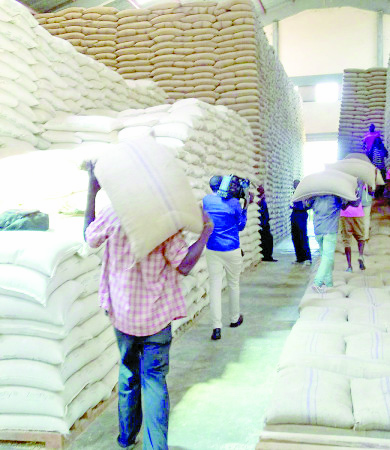Invest in food storage facilities to end hunger
By serahkamau, August 16, 2023A spot-check of farmlands makes for pleasant views of the bumper harvest that most farmers are expecting. Acres of land covered in thriving maize fields, peas, potatoes, fruits and what have you dot the farms, a welcome relief from hunger caused by past prolonged dry spells.
Bumper harvest in most parts of the country comes as a relief to farmers who have suffered extremely low yields for the last three years, leading to an acute food insecurity and high food prices that have recently sparked street protests. The obvious assumption is that with the bumper harvest, food insecurity will not top the list of challenges facing Kenyans, right? Wrong. The bumper harvest is as far as it goes, and will not fix the hunger issues, thanks to systemic maladies that lead to costly post-harvest losses.
Significant amounts of food produced mostly by small-scale farmers will be lost before and after the harvest because of lack of markets and poor storage, thereby aggravating hunger. Simply put, post-harvest losses refer to food loss across the food supply chain from harvesting of crop until its consumption. Food losses happen at every stage of chain, as produce become spoiled or lost during harvesting, handling, processing, storage, transportation and distribution.
Post-harvest losses have previously been estimated at 30 per cent of all harvested crops. Reports by the Fresh Produce Consortium of Kenya, for instance, indicate that nearly 40 per cent of the food produced in the horticultural value chain is lost either through poor post-harvest handling, lack of information on best practices and poorly-structured markets.
Post-harvest losses have a huge impact on environment as land, water, human labour and non-renewable resources are used to produce, process, handle and transport food that no one eats.
Needless to say, agriculture has the potential to completely transform our country, fully feed us and hugely contribute to our economic growth. It’s worth noting that the agriculture sector contributes 33 per cent of Gross Domestic Product, and employs more than 40 per cent of the total population (and 70 per cent of the rural population).
Farmers, and the government alike, are yet to unlock the full potential of the sector because of the myriad challenges such as climate change, use of outdated technologies, diseases, poor infrastructure, and soil fertility.
Over the years, the government has come up with interventions to improve food production, including enacting laws to guide the agriculture sector; boosting irrigation by building dams; and even provision of subsidised fertilizer.
However, the government lags behind on preservation of food produced, leading to massive wastage. It was, therefore, encouraging to see President William Ruto last week announce that the government will implement the Warehouse Receipt System Act, 2019. The legislation establishes a structured and well-regulated trading system for agricultural commodities.
The Warehouse Receipt System is a process where farmers, producers or growers deposit their produce in certified warehouses and are issued with a receipt as proof of ownership. This document can be used as collateral to access a loan from financial institutions. Unfortunately, there is still lack of information on the system amongst farmers, which could affect the uptake.
Improved technology and training has shown success in reducing losses in other parts of the world. If we are to effectively tackle the perennial problem of food insecurity, the government must invest in better storage and food processing technologies and enhanced packaging techniques.
This will not only ensure food security for Kenyans, but also better earnings for large- and small-holder farmers. Private sector players have supplemented government efforts by coming up with varied technologies to help farmers preserve produce, but there is a lot more to be done. The government should ensure farmers can access affordable credit to acquire these new technologies and also train them on usage.
Ultimately by preventing post-harvest losses, we can increase the availability of food without requiring additional resources or placing additional burden on the environment.
— The writer is Acting Chief Sub-Editor at the People Daily
